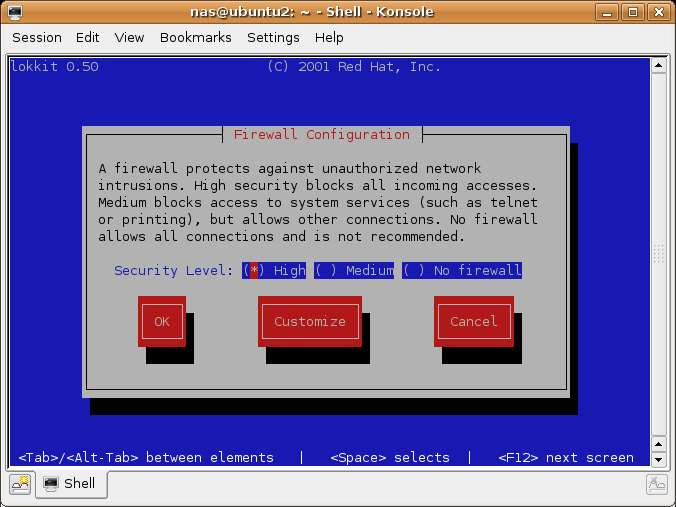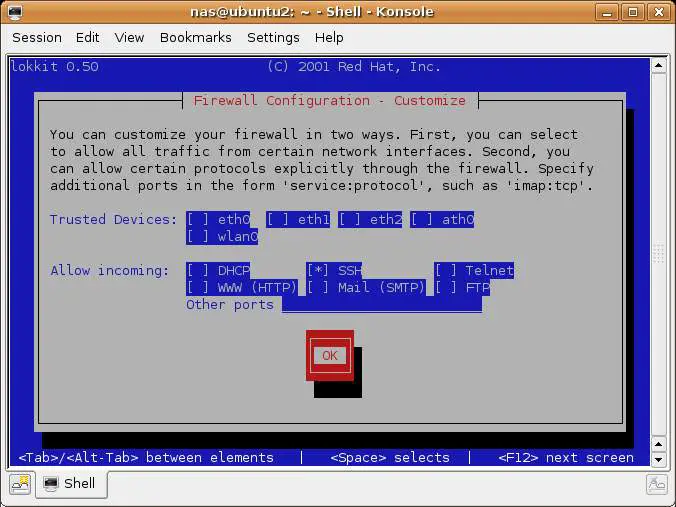Configuring Ubuntu Linux Remote Access using SSH
SSH is a TCP/IP service that provides a secure mechamism for remotely logging into one system over either a local network or the internet into another system. SSH also provides the ability to transfer files between remote systems. When a user logs into a remote system using SSH, they receive a command prompt allowing them to enter commands on the remote system as if they were sitting at the remote system and had opened a terminal session.
In this chapoter we will cover the steps necessary to configure an Ubuntu Linuux system to accept SSH connections. This involves installing the SSH server on the local systems and configuring the firewall to allow SSH connections.
Installing SSH on an Ubuntu Linux System
In order for a system to accept SSH connections the system must first be running the SSH server. By default, Ubuntu Linux does not install the SSH server so the first step is to ensure that the server is installed. This can be performed using either the Synaptic Package Manager or the apt-get command-line tool.
To install using using the Synaptic Package Manager, select the System desktop menu and then click on Synaptic Package Manager in the Administration sub-menu. Enter your password when prompted to do so. Click on the Search button in the toolbar and search for openssh-server. After the search completes, you will see openssh-server in the package list. Simply click on the check box next to this item and follow the instructions to install the SSH server package.
To install from the command line, begin by opening a terminal window by selecting the Applications menu and selecting Konsole from the System Tools menu. In the terminal window enter the following command and press enter to execute it:
sudo apt-get install openssh-server
The installation process with download the SSH server, install it and start the service running in the background. You may now attempt to connect from a remote system (see below for details of how to do this). If you receive a "connection refused" message when you try to connect it you may need to configure the firewall to allow SSH connections to be established to this system.
Configuring the Ubuntu Linux Firewall to Allow SSH Connections
If you are using a firewall to protect your system you will need to allow SSH connections before you be able to connect from a remote system. If you are using the basic firewall configuration (see Basic Ubuntu Linux Firewall Configuration) you can allow SSH connections using the lokkit tool.
If you do not already have a terminal window open start one by selecting Konsole from the System Tools sub-menu of the desktop Applications menu. The lokkit screen will appear as follows:
Use the Tab key to move the Customize button and press Enter. On the Customize screen Tab to the SSH entry and press space so that an asterisk (*) appears nextr to the setting to show it is enabled. The screen should now appear as follows:
Tab to the OK button and press Enter to return to the main screen. Tab once again to the OK button and press enter to exit lokkit.
If you have configured your fire3wall using the Firestarter tool you will need to set up an incoming connection policy to allow connections to the SSH service. Configuring Firestarter is covered in detail in Using Firestarter to Configure an Ubuntu Linux Firewall.
Using SSH on Ubuntu
SSH can be used to log into your system from a remote system. It is also possible to test that the SSH server is runnign and accessible from the local machine. SSH connections are established using the ssh client utility.
To connect from your local machine back to itself use the following command:
ssh -l username ipaddresss
Where username is teh name of the user you wish to log in as and ipaddress is the IP address of your system. You can also substitute the hostname of the system in place of the IP address. If you do not know the IP address run the ipconfig command in a termianl window. This will output information similar to:
eth0 Link encap:Ethernet HWaddr 00:13:72:0B:14:57
inet addr:192.168.2.21 Bcast:192.168.2.255 Mask:255.255.255.0
inet6 addr: fe80::213:72ff:fe0b:1457/64 Scope:Link
UP BROADCAST RUNNING MULTICAST MTU:1500 Metric:1
RX packets:4261067 errors:0 dropped:0 overruns:0 frame:0
TX packets:4409081 errors:0 dropped:0 overruns:0 carrier:0
collisions:0 txqueuelen:100
RX bytes:2068332349 (1.9 GiB) TX bytes:2408187471 (2.2 GiB)
Base address:0xcce0 Memory:fe3e0000-fe400000
In the above output the IP address is shown as inet addr:, in this case 192.168.2.21.
To connect from a remote system perform the same steps above using either the IP address or host name of the remote host to which you connect. Enter you password when prompted and you will find yourself logged into the remote system.
Copying files using SSH
The SSH service provides a mechanism for copying files to and from a remote system. Copying is performed using the scp utility. To copy a file to a directory on a remote system execute the following command:
scp myfile.txt [email protected]:/home/demo
Where myfile.txt is the name of the file to be uploaded to the remote system, username is the name of user account to be used to log into the remote system, 192.168.2.1 is replaced by the real IP address or hostname of the system and /home/demo represents the directory into which the file should be copied.
The above file could similarly be copied from the remote system to the local system as follows:
scp [email protected]:/home/demo/myfile.txt .
The above command will copy the remote file to the current directory on the local system.
Disabling the SSH Server
Having configured the system to run the SSH server we can now look at how to disable it. As we mentions previously the SSH server runs in the background as a service. In order to diable SSH we need to turn off the SSH serivce. This can be achieved using the Services tool. To launch the services tool click on the desktop System menu and select Services from the Administration sub-menu. Enter your password when prompted to do so. The Services tool will appear containing a list of all available services. Scroll down to find the Remote shell server entry as shown below:
Uncheck the box next to the SSH entry and click on the Close button. The SSH server is now disabled. To re-enable the server repeat the above steps and check the box next to 'Remote shell server to enable the service.






